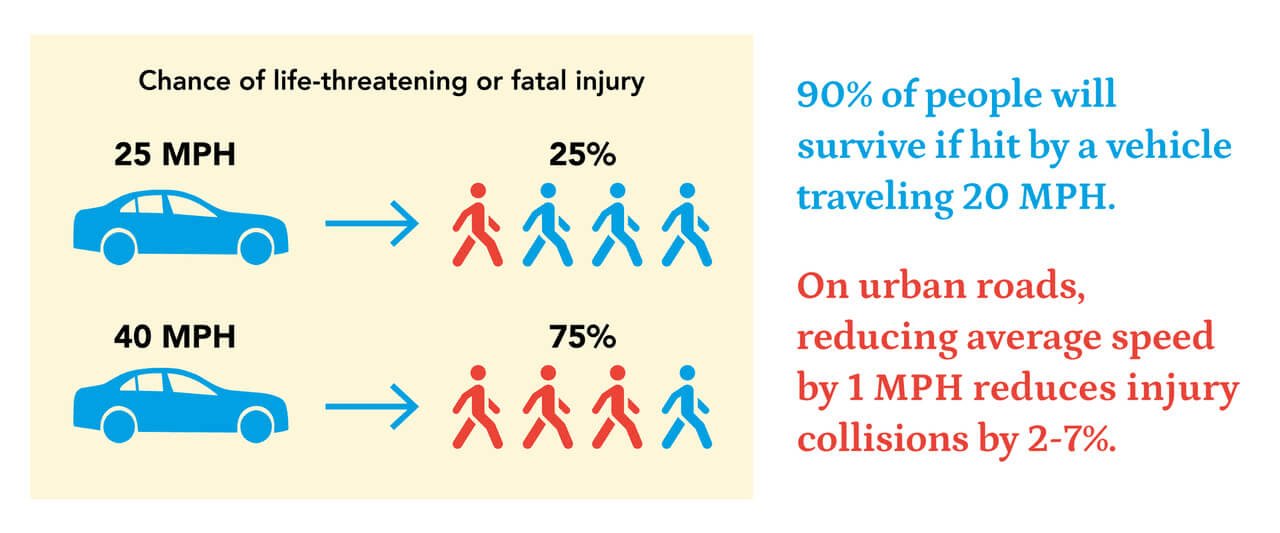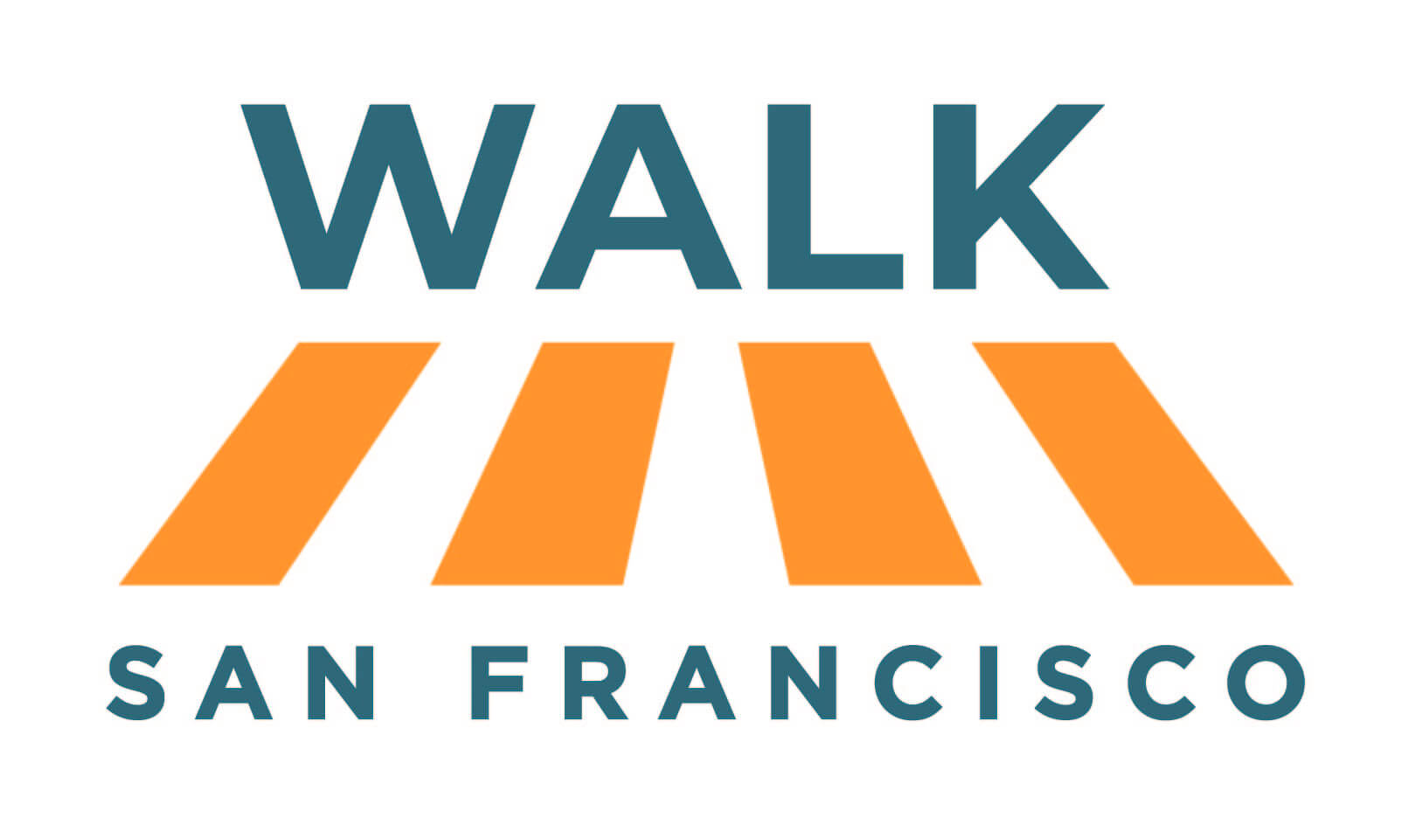PRESS RELEASE
FOR IMMEDIATE RELEASE: September 28, 2024
CONTACT: Jodie Medeiros, Executive Director, Walk San Francisco, (415) 596-1580 (cell), jodie@walksf.org; Marta Lindsey, Communications Director, Walk SF, marta@walksf.org, 617.833.7654
Governor Newsom vetoes vehicle speed technology bill
Victims share grief and anger at Newsom’s decision: ‘How many people have to die?’
San Francisco, Calif. – Today, California Governor Gavin Newsom vetoed Senate Bill 961 (Wiener), a bill that would have required a lifesaving technology in all vehicles made and sold in California starting in 2030.
“I lost my son to a speeding driver. I had really hoped that Governor Newsom would stand with victims like me and sign SB 961,” said Joe Martinez, a member of Families for Safe Streets who resides in Fresno, California. “How many more people have to die from speeding for us to see meaningful actions to address this?”
“If the Governor knew what it felt like to wake up each day without your child because of a speeding driver, he wouldn’t have hesitated for a single moment to sign this bill,” said Families for Safe Streets member Liz Quiroz, whose daughter Aileen was hit and killed by a speeding driver in San Jose in the crosswalk in front of Aileen’s school.
More than 1,000 Californians are killed by speeding drivers each year, and tens of thousands injured. Speeding is the #1 cause of severe and fatal traffic crashes in California.
“We are deeply disappointed that Governor Newsom didn’t take this golden opportunity to lead in saving lives,” said Jodie Medeiros, executive director of Walk San Francisco. “Requiring speed technology in vehicles is a common sense solution that will make our streets safer for everyone, inside and outside of vehicles. The Governor chose the auto industry, not public safety.”
Senate Bill 961 (SB 961) had drawn support and attention from around the country. This is in part because the federal government has been slow to act in developing vehicle safety requirements for what’s called ‘Intelligent Speed Assistance,’ despite this type of advanced driver assistance being recommended by the National Transportation Safety Board as a standard feature. The National Highway Traffic Safety Administration also recommends Intelligent Speed Assistance.
The hope was that by California requiring the technology, it would jumpstart widespread adoption. States have similarly led the way on other federal vehicle requirements, like seat belts and lower tailpipe emissions.
“Victims around the country like me have been calling, writing, and pleading with Governor Newsom to do the right thing. While we grieve for the lives that will be lost to speeding, we will not stop fighting. Intelligent Speed Assistance is a common sense, lifesaving technology whose time has come,” said Amy Cohen, co-founder of Families for Safe Streets, whose son Sammy was killed by a speeding driver. “States like California can and must lead the way.”
The automobile industry opposed SB 961. Yet the automobile industry continues to design vehicles that are dramatically faster than in previous generations. According to the Environmental Protection Agency’s 2022 Automotive Trends Report, the average American vehicle from model year 2021 could reach 60 mph in 7.7 seconds. This is about twice as fast as cars purchased in the early 1980s. Electric vehicles are even faster than the average American vehicle, with many reaching 60 MPH in only a few seconds.
“If the auto industry is going to make cars and trucks that encourage drivers to go too fast, it is only right that there is vehicle technology to help counteract this,” said Medeiros. “Sixty years ago, when states wanted to require seat belts in cars, the auto industry fought it. But no one would question seat belts today as a necessary safety measure. Intelligent Speed Assistance in vehicles is no different.”
Pedestrian deaths are at a 40-year high, with the combination of speed, vehicle size, and weight as significant contributing factors. And the trend of bigger, heavier, and more powerful vehicles is expected to continue.
“It is unquestionably deadlier to be a pedestrian now because of how vehicles are designed,” said Medeiros. “Intelligent Speed Assistance is a critical safety feature because it helps protect people not just inside the vehicle, but outside the vehicle.”
A diverse coalition came together in support of SB 961, including Mothers Against Drunk Driving (MADD), the National Safety Council, the American Academy of Pediatrics (California) – and important to note, driver groups AAA of Southern California and AAA of Northern California, Nevada, & Utah (full list of supporting organizations).
A recent survey by the Insurance Institute on Highway Safety also found that the majority of Americans support Intelligent Speed Assistance.
“This technology is proven to save lives, has resounding support from safety experts, plus the public supports it. This should have been an easy yes for the Governor,” said Medeiros.
# # #
Europe Requires Intelligent Speed Assistance in All New Vehicles
Europe has embraced Intelligent Speed Assistance in recent years and now requires it in all new vehicles. In Europe, the effects on speeding have been dramatic for both warning and control type systems, decreasing the amount of speeding and narrowing the speed distributions.The European Transport Safety Council reports that Intelligent Speed Assistance could reduce road deaths by 20% across the European Union.
The Role of Speeding in Traffic Deaths
In San Francisco and California, speed is the #1 cause of severe and fatal traffic crashes. More than 1,000 Californians have died in speed-related traffic crashes every year for the past five years, and tens of thousands are severely injured each year. Across the United States, speeding kills more than 10,000 Americans annually, and is one of the top contributing factors in traffic deaths.
The faster a driver is going, the more likely a crash is to occur. A driver has a smaller scope of vision, less time to react, and can’t stop the vehicle as quickly. And the human body can’t withstand the additional force as speeds rise.
With vehicles larger, heavier, and more powerful than ever – plus drivers more distracted – the stakes with speeding have never been higher.
The most frequently cited study on speed and risk of fatality shows that at 25 MPH and under, a person has a less than 1 in 4 chance of being severely injured or killed if they are hit. But by 40 MPH, this flips, with 75% of pedestrians suffering life-threatening injuries or dying.
 ##
##
Walk San Francisco (Walk SF) was a sponsor of SB 961. Walk SF advocates on behalf of all pedestrians in San Francisco, pushing for solutions so our streets are safe for every age and ability. Learn more at walksf.org.
Families for Safe Streets brings together people who have been injured or lost loved ones in traffic crashes. It was founded in 2014 in New York City and is growing as a national movement with chapters across the country, including three California chapters including in the San Francisco Bay Area, Southern California, and San Diego. Learn more at familiesforsafestreets.org.

